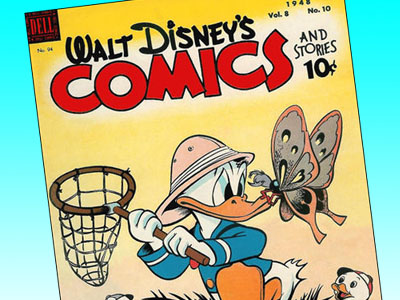
Before you partake of this installment of this series, you may wish to read or review Part 1 and/or Part 2.
Western Printing and Lithographing Company was a company founded in 1907 by a man named Edward Henry Wadewitz. Why it was called "Western" when it began in Racine, Wisconsin is just one of those questions I wondered about for years. When I did work for the company in the seventies, it was one of about eight thousand things I asked about and here is the closest thing to a good answer I got…
Mr. Wadewitz was a printer working for a company in that city called West Side Printing. The person at Western who told me this said, "I assume it was called that because it was on the west side of Racine." He further told me that West Side wasn't well managed and was losing money so Wadewitz saw an opportunity. He bought the company and renamed it "Western" so it kind of seemed like the same company but not exactly. You can believe that explanation if you want. I decided it would do until a better one comes along.
Under Wadewitz's management, the firm did much better and was printing books and magazines for a wide array of companies. Some of those companies were unable to pay their printing bills so Western wound up owning those companies…which put them into the publishing business. This is the way quite a few printers became publishers. The founding of DC Comics was a not-terribly-dissimilar situation.
So Western Printing also became Western Publishing, more so when one of the publishers it acquired was a large outfit called Hamming-Whitman. Eventually, Whitman became the name for a subsidiary of Western that specialized in books for younger audiences. And some of those books were in the area of activity books — coloring books, puzzle books, connect-the-dots books, etc. Whitman jigsaw puzzles were a very big thing and they had another division making stationery and yet another manufacturing playing cards.
Yet another division was K.K. Publications, "K.K" being the initials of Kay Kamen, an enterprising gent who was in charge of character merchandising for the Walt Disney Studios. Eventually through his good offices, Western would sew up the publishing rights to Mickey Mouse, Donald Duck and anything else that came out of Mr. Disney's empire. Later on, they made similar arrangements with other animation studios including Warner Brothers, Walter Lantz and M.G.M. These were deals to feature those studios' properties in every kind of item Western produced and that would include comic books.
In 1938, they made a deal with Dell Publishing to furnish Dell with a comic book line. Dell would "publish" the comics in terms of deciding what to publish, putting up the money to produce the comics and then distributing the comics. The editors of those comics worked for Western, not Dell, and the writers and artists of those comics were paid by Western, not Dell. Carl Barks, who wrote and drew some of the best Disney comics published under the Dell logo worked for Western, not Dell, and the rights to do Disney comics were among the many held by Western, not Dell.

For decades, it was a very lucrative arrangement for both companies. Some of those comics sold in the millions per issue and in addition to comics made using the characters licensed by Disney, there were the licenses with Warner Brothers, Lantz, M.G.M. and hundreds of others that Western acquired. They also did adaptations of movies and live-action TV shows and there were original properties, as well. The Dell/Western line was at times, the best-selling line of comics in the business…an achievement that often went unrecognized by their competitors.
In 1970, I started my relationship with D.C. Comics. This was at a time when Marvel was starting to claim that they had the best-selling line in the field. It was arguably true then and soon became inarguably so…but at the time, a senior D.C. staff member told me, "D.C. Comics has always been #1 in this industry." Being the kind of person who would ask something like this, I asked, "What about Western and Dell in the fifties and early sixties?"
The gentleman gave me a look of contempt and said, "They don't count."
They counted a lot for a while…but then something happened. In 1962, Dell Publishing and Western got a divorce and split, in effect, into two separate companies. This will be explained in greater detail in the next part of this series…and right about now, some of you are probably wondering, "What does any of this have to do with word balloons in comics touching panel borders?" Well, that will be explained, too.